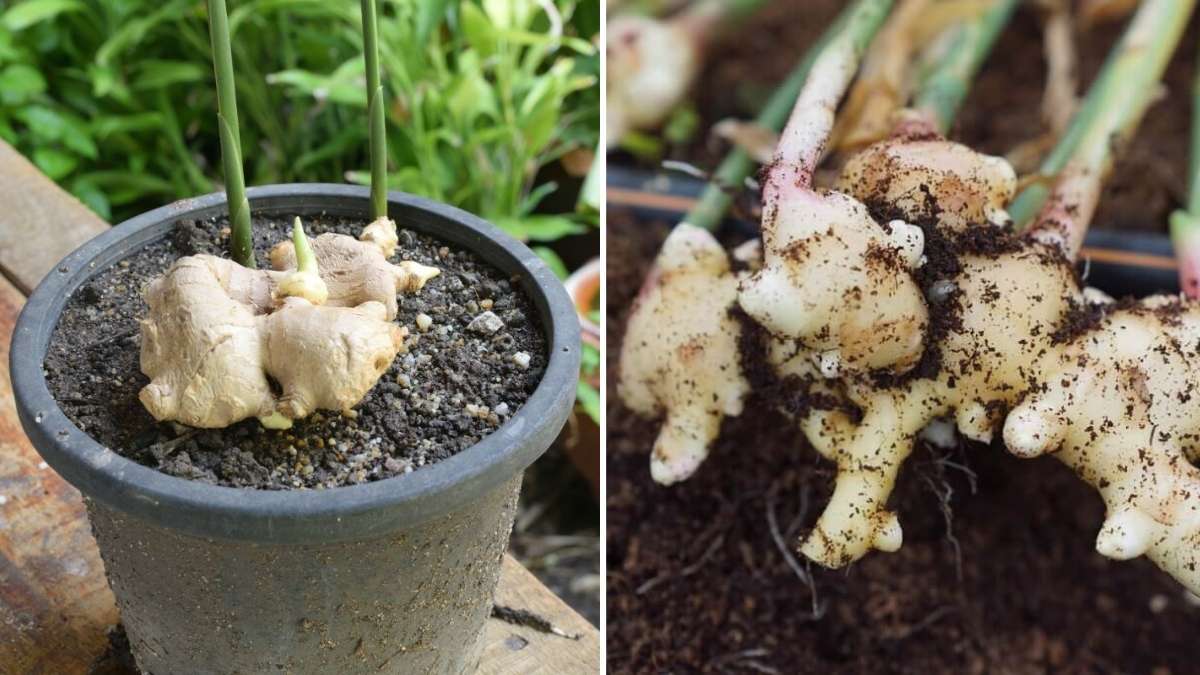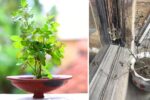Ginger is not only a popular spice but also a medicinal plant known for its health benefits. Growing ginger at home is easier than most people think. Even if you don’t have a garden, you can cultivate ginger on your balcony or patio in pots. Fresh, homegrown ginger tastes far better than store-bought, and growing it can be a relaxing and rewarding hobby.
This guide will walk you through each step of growing ginger in pots, from selecting the right root to harvesting and using it in your kitchen.
Choosing the Right Ginger
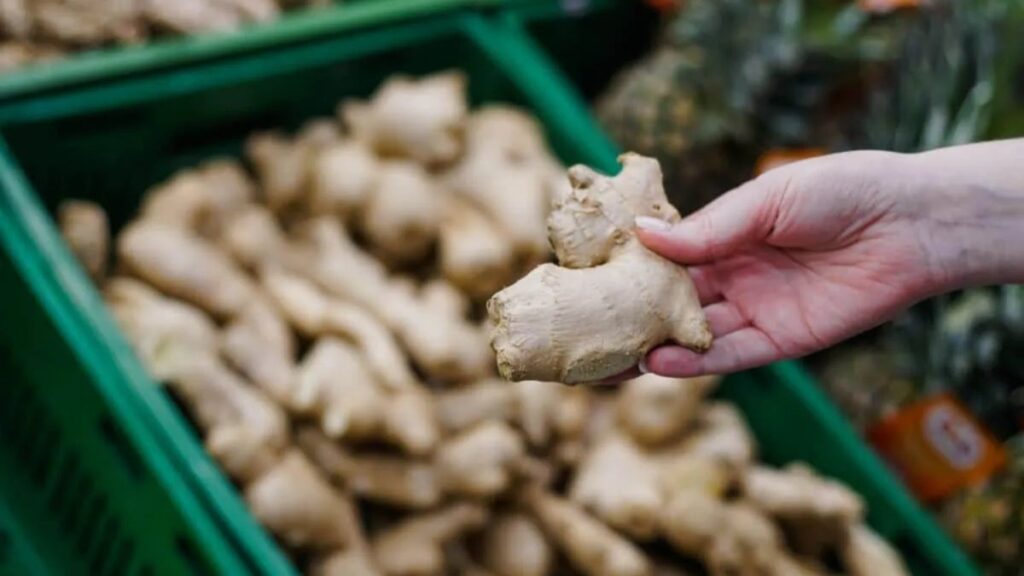
The first step in growing ginger successfully is selecting a healthy root. Here’s what to keep in mind:
- Look for fresh, plump roots with visible buds or “eyes.” These buds are where new shoots will sprout.
- Avoid shriveled, soft, or dried-out roots as they are less likely to grow.
- Organic ginger is preferred because conventional ginger may be treated with growth inhibitors to prevent sprouting.
- If possible, choose ginger from a local market instead of a grocery store, as it may be fresher and more likely to sprout.
Starting with a healthy root is essential because it affects the growth, flavor, and overall success of your ginger crop.
Selecting a Suitable Pot
Ginger grows horizontally more than vertically, so a wide and deep container works best. Consider the following:
- Use a pot that is at least 12 inches deep and wide. A shallow pot will limit root growth.
- Ensure there are drainage holes at the bottom to prevent waterlogging, which can cause root rot.
- Wider pots allow the ginger to expand naturally. If you want, you can also use rectangular planter boxes.
- Plastic, clay, or ceramic pots all work, but make sure the material is durable and can retain some moisture while allowing drainage.
Choosing the Right Soil
Soil is one of the most important factors for healthy ginger growth. Ginger prefers loose, fertile, and well-draining soil.
- Mix potting soil with compost and a little sand for drainage.
- Avoid heavy clay soils, as they retain too much water and can suffocate the roots.
- Adding organic compost enriches the soil with nutrients, helping the ginger grow faster and healthier.
- A slightly acidic to neutral soil pH (5.5 to 6.5) is ideal for ginger.
Proper soil not only ensures good growth but also prevents diseases caused by soggy or nutrient-poor conditions.
Planting Ginger
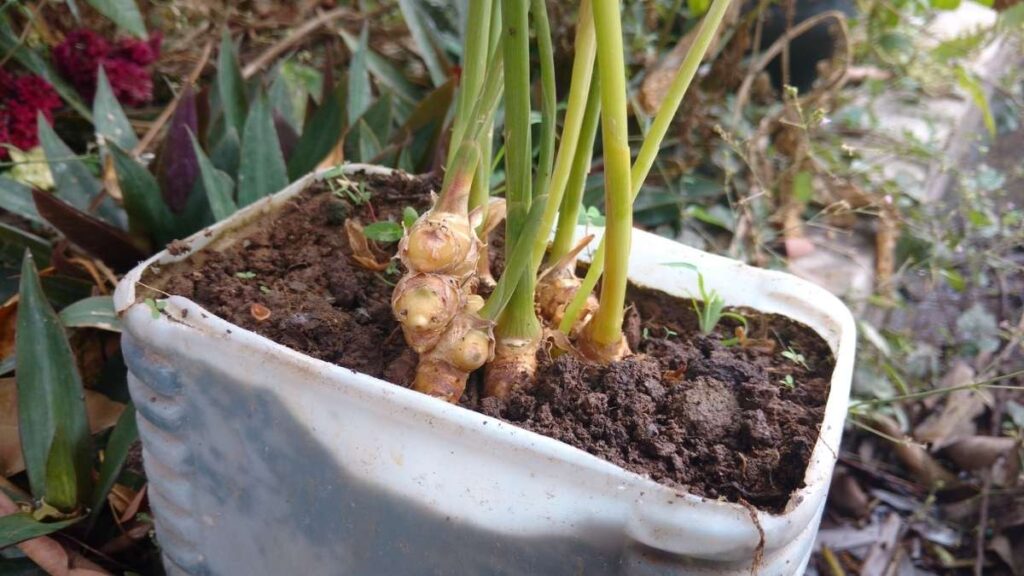
Planting ginger is simple but requires care to ensure good sprouting.
- Cut the ginger root into pieces, each with at least one or two buds.
- Allow the cut pieces to dry for 1-2 days before planting. This helps prevent rotting.
- Plant each piece 1-2 inches deep with the buds facing upwards.
- Cover lightly with soil and water gently.
- Keep the pot in a warm, shaded area for the first few weeks while the shoots emerge.
Sprouting can take anywhere from 2 to 4 weeks depending on temperature and humidity. Be patient and avoid overwatering during this stage.
Watering and Care
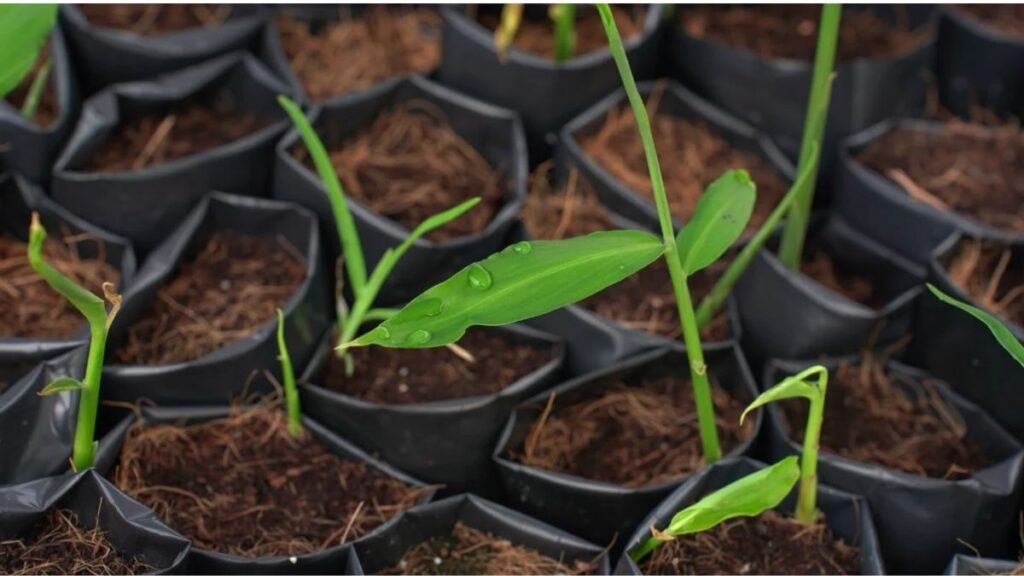
Watering is crucial to the healthy growth of ginger.
- Keep the soil slightly moist at all times, but avoid waterlogging. Overwatering is the most common cause of root rot.
- Mist the leaves occasionally, especially in dry climates, to maintain humidity.
- Fertilize every 3-4 weeks with a balanced liquid fertilizer to encourage root development.
- Avoid fertilizers high in nitrogen, which can lead to lush leaf growth but poor root development.
Additional care tips:
- Remove yellowing or damaged leaves to encourage new growth.
- Loosen the soil occasionally to improve aeration.
- Rotate the pot to ensure all sides receive sunlight evenly.
Light Requirements
Ginger prefers indirect sunlight rather than harsh direct light.
- Place your pot in a location with filtered sunlight or partial shade.
- Morning sunlight and afternoon shade are ideal, especially on balconies that receive strong sun in the afternoon.
- Too much direct sun can scorch leaves, while too little light will slow growth and reduce yield.
Balancing light is key to healthy leaves and roots.
Temperature and Humidity
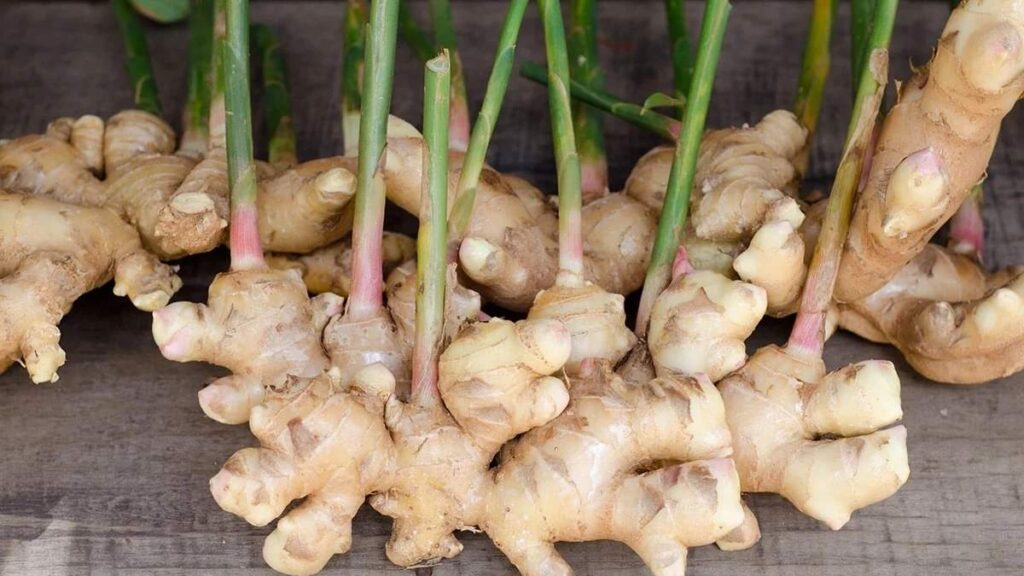
Ginger thrives in warm, humid conditions.
- Ideal temperatures range between 22°C to 30°C (72°F to 86°F).
- Protect your ginger from frost or cold winds. In colder climates, move pots indoors or use a greenhouse setup.
- Maintaining humidity helps prevent leaf drying. Regular misting or a humidity tray can be useful in dry areas.
Managing Pests and Diseases
While ginger is generally resilient, some pests and diseases can affect it.
- Watch out for aphids, spider mites, and mealybugs.
- Root rot is common if the soil is waterlogged.
- Use neem oil or insecticidal soap to control pests naturally.
- Ensure proper drainage and avoid overwatering to prevent diseases.
- Keep your pots and soil clean and free from debris.
Healthy care practices reduce the need for chemical pesticides and result in better quality ginger.
Harvesting Ginger
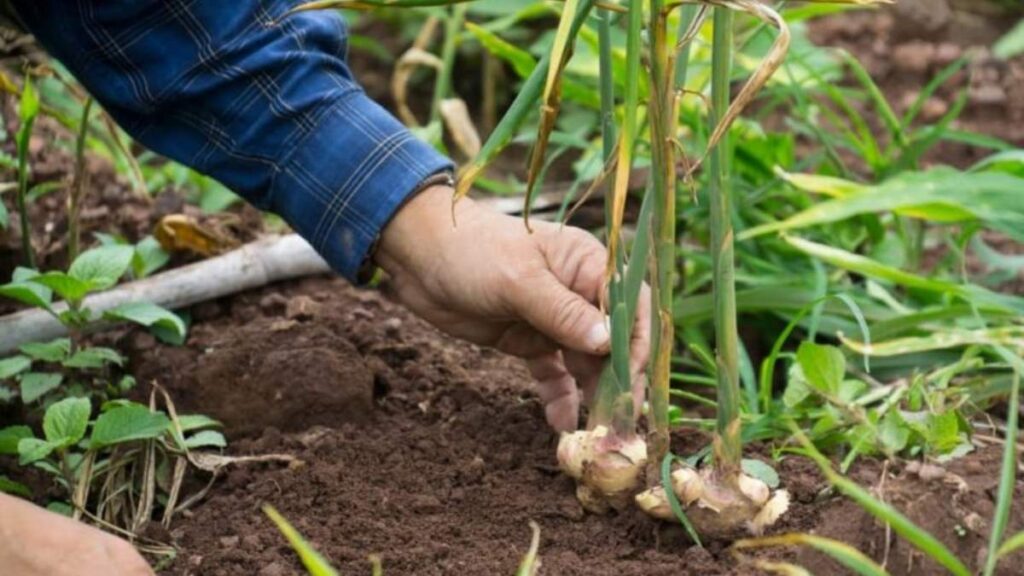
Ginger can be harvested at different stages depending on your needs.
- Baby ginger can be harvested after 4-5 months. It is tender and has a milder taste.
- Mature ginger takes 8-10 months and has a stronger, spicier flavor.
- To harvest, gently dig around the roots and break off what you need. Leave the rest to continue growing.
- Wash and dry the roots before storing them.
Harvesting carefully ensures that the plant continues producing new rhizomes.
Tips for Successful Growth
To maximize your ginger harvest:
- Rotate pots occasionally to ensure even sunlight exposure.
- Mulch the soil to retain moisture and reduce weed growth.
- Monitor water levels, especially during heavy rains or dry spells.
- Fertilize lightly every few weeks to support growth.
- Keep an eye on pests and remove affected leaves promptly.
These small practices make a big difference in overall plant health.
Using Homegrown Ginger
Homegrown ginger tastes far superior to store-bought. Some ways to use it:
- Add to teas, juices, and smoothies for flavor and health benefits.
- Use in curries, stir-fries, or soups for an aromatic boost.
- Grate into desserts or baked goods for a warm, spicy flavor.
- Baby ginger is milder, while mature ginger adds stronger spice.
Growing your own ginger allows you to enjoy it fresh and chemical-free.
Benefits of Growing Ginger at Home
Growing ginger at home has multiple benefits:
- Access to fresh, chemical-free ginger whenever needed.
- A relaxing and rewarding hobby for your balcony or patio.
- Adds greenery and a pleasant aroma to your outdoor space.
- Helps you save money compared to buying fresh ginger regularly.
Even with limited space, a small pot can provide a continuous supply of ginger.
Conclusion
Growing ginger in pots on your balcony or patio is simple and highly rewarding. By selecting healthy roots, using proper soil and pots, and providing regular care, you can harvest fresh ginger all year round. It not only enhances your cooking but also creates a green, aromatic space on your balcony. With patience and attention, even a small balcony can become your own mini ginger garden.

